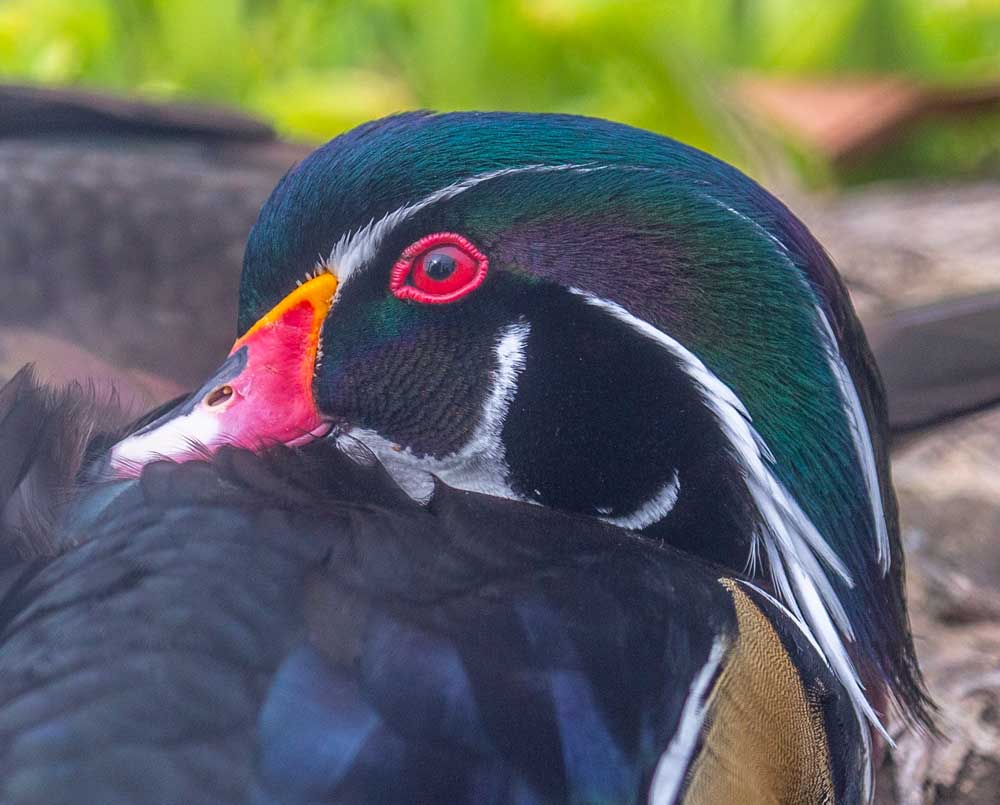Wildlife finding opportunities in Northeast Oregon
Published 10:54 am Thursday, July 1, 2021

- Wood duck
PENDLETON — Among the reasons we choose to visit or live in Northeast Oregon is the rich variety of habitats available for finding plants and animals. No matter the season, there are always opportunities to find cool natural landscapes to visit with something to see. With so much variety it helps to think of mountains, water, and lowlands as different habitats, each with their own species assemblages.
Trending
Mountains
Forested mountain habitats are where we find the best-known large animals, known somewhat tongue-in-cheek as charismatic megafauna. We find white-tailed and mule deer, Rocky Mountain elk, black bear and, if you’re really lucky, wolf, moose, mountain lion and mountain goat. Deer are found nearly everywhere, although white-tailed deer are less abundant lately due to disease. Elk are more wary and travel greater distances, but in midwinter they typically come down to low elevations in very visible herds numbering into the hundreds. Some likely midwinter places to see elk herds include the Grande Ronde Valley, foothill wheat fields near Pendleton, and the flats north of Ukiah along Highway 395. The closest thing we have to a guaranteed elk spotting location is the Elkhorn Wildlife Area near North Powder, where the state feeds elk in the winter to reduce damage on private lands.
However, for most of the year elk prefer mountainous areas away from motor vehicle disturbance, and local research indicates that they prefer to be in areas more than a mile from motor vehicles. In areas where deer and elk both live, the deer are more abundant near roads and the elk more abundant away from roads. So, if you’re hiking from a roadside trailhead and you’re seeing good numbers of deer, keep going; you may soon be entering elk habitat.
Mountain goats are found in only a few locations in the Blue Mountains. They live at the highest elevations, in more open rugged granite mountain tops like the Elkhorn Mountains near Anthony Lake. Bighorn sheep also like steep terrain but prefer lower elevation open canyon country, like the area near Potamus Point west of Ukiah and in Hells Canyon in far eastern Wallowa County.
It’s not all about the large, dramatic creatures. Bird watching is fruitful any time of year in our region. Here’s a tip: don’t overlook recently burned forest habitats. Areas of standing dead trees are rich in species that are feeding on insects and/or building nests in snags. Three-toed woodpeckers, nuthatches, chickadees, bluebirds, creepers, and small owls all nest in cavities in dead trees.
In mature forests, with lots of large trees and logs on the ground, watch for pileated woodpeckers. This is a very large, black and white woodpecker with a red crest (think Woody Woodpecker) and typically feeds on carpenter ants in trees and logs. They are not particularly shy, and they will allow you to watch them if you are quiet, move slow, and keep your distance.
One unusual plant species easy to find in the Blues is the western larch, a conifer that loses its needles every fall and grows them anew in the spring, with color changing from pale green in spring to dark green in summer and brilliant yellow in the fall. At the highest elevations in the Wallowas and Elkhorns, you can find whitebark pine growing in the rockiest, craggiest areas. This pine has five needles per cluster (as opposed to two for the much more common lodgepole pine and three for ponderosa pine) and is one of the longest-lived tree species in North America, although it is currently declining due to a disease known as white pine blister rust.
Specific locations: The majority of forested mountain areas in the Blues are national forest land, owned by you and me and open to public use, with millions of acres of land to enjoy. Specific areas to check out include the Wallowa Mountains (Eagle Caps), the Elkhorns, the North Fork John Day Wilderness, Bridge Creek State Wildlife Area south of Ukiah, and Hells Canyon.
Grass and shrub lands
A second type of habitat is the lowland shrub, grass, and agricultural lands on the western edge of the Blues between Pomeroy and Burns and the John Day, Grande Ronde, Wallowa and Baker valleys. These areas are more accessible in the winter, providing us good opportunities for winter outings to clear out cabin fever.
Because of migration patterns, our winter and summer bird species lists are different. Winter species to watch for include short-eared owls perched on fence posts and rough-legged hawks on power poles in agricultural land. In the summer it is common to see Swainson’s and red-tailed hawks nesting in trees among farmlands, and a lucky sighting would be golden eagles, which nest on rocky ledges and occasionally in trees.
Non-native but locally abundant game birds of grass/shrub areas include ring-necked pheasant, California quail, and chukar and Hungarian partridge. Long-billed curlews and sandhill cranes are unusual sightings, but they are here every year in the spring.
You can also find pronghorn (antelope) along Highway 395 between Pilot Rock and Battle Mountain.
Specific locations: Much of the lowland area is private land, so wildlife viewing may be limited to roadside sightings. Highway 395 between Pilot Rock and Battle Mountain is a good spot to look, as is Foothill Road in the Grande Ronde Valley. The Wanaket Wildlife Area northeast of Hermiston is owned by the Confederated Tribes of the Umatilla Indian Reservation and open for public wildlife viewing use for a short period in late winter (February 15-March 31). In Wallowa County the Zumwalt Prairie is owned by The Nature Conservancy and provides plenty of wildlife viewing in native mountain prairie habitat.
Water
Water is a key habitat feature for wildlife species as one of the necessities of life. Lakes, streams, and ponds all provide different habitats with their own suite of species. Animals that live on or in the water in northeastern Oregon include a wide range of waterfowl, herons, grebes and shorebirds, including avocets and phalaropes, as well as painted turtles, beavers, muskrats, mink, and you may even spot river otters.
The past few winters we have seen flocks of tens of thousands of snow geese on the Columbia River near Umatilla, no doubt attracted to the open water and food found in nearby fields. The clouds of white geese moving off the river is a truly inspiring sight. American white pelicans, an even larger white bird, can be seen much of the year on the water or circling lazily over the Columbia or Umatilla rivers. In the spring and fall you can find tundra swans and even a few trumpeter swans migrating through our area resting on larger bodies of water.
Waterfowl are hunted until the end of January in our area as they migrate through or even overwinter, attracted to the large rivers for rest and security and harvested agricultural fields for abundant food. Not so coincidentally, bald eagles use much of the same open water habitat as find waterfowl to be a favorite food source.
Specific locations: The Columbia River has abundant public land from Boardman to Wallula and is worth investigating any time of year. Other good locations include Wanaket Wildlife Area east of Hermiston (open to public access daily February 15-March 31 only), Ladd Marsh in the Grande Ronde Valley, and Echo Meadows and Stanfield Meadows roads near Interstate 84.









